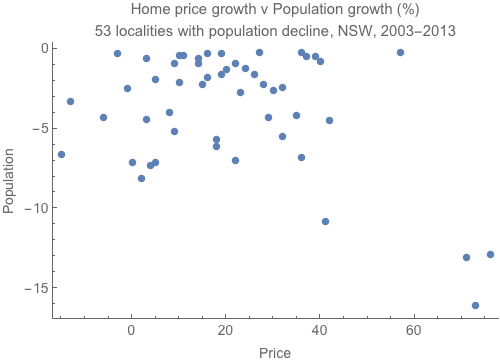Assessment of the merits of such projects typically require some kind of cost-benefit analysis. This analysis is intended to take into consideration the vast array of externalities and second round effects of major mines, ports, rail, and other projects, like casinos, subdivisions, and so forth.
One major problem with these assessments is the sheer ambiguity of the requirements, and hence the quite extreme level of discretion in how to undertake the assessment. Project proponents employ economic guns-for-hire who use whichever method of assessment gives the desired answer. Not surprisingly, benefits alway greatly exceed costs.
My fellow speakers in the night - Rod Campbell and Sean Ryan - shared examples of mining companies sourcing bogus economic reports to massively overstate the social benefits of their proposed operations, only to find them thrown out of court during appeal cases. This has lead to some projects having multiple economic reports; the first commissioned to give an outrageous answer, the next to give an answer that might stand up in court.
There is clearly a problem of outrageous flexibility in the regulations when the same company can commission two economic assessments and get two totally different answers to the social costs and benefits of the same project. In one case the net job creation estimate was inflated by 1,000% compared to their second round report, while the value of State royalties was inflated by 1,800% ($22billion compared to $1.2billion).
But this is not an accident. Major mining and property development projects are the playground of politically connected insiders. Take this example of a mine neighbouring NSW Minister for Primary Industries, Lands and Water Niall Blair’s property, which has “this remarkable dogleg around the minister's property by the mine site”.
Political connections get outcomes in this game, and to keep the game going requires considerable flexibility in the assessment regulations.
Apart from this political element, I spoke about two main points.
My second point is that major developments, particularly open cut mines, are irreversible commitments. If at some future point in time it turns out that the site is more profitably and socially beneficial for use in agriculture, or some other use (say a solar electricity generation plant), then we cannot change the use from open cut coal mine back to these alternatives.
But if we stick with agriculture, we keep open the option for alternative high-value uses at future points in time. Thus, when comparing the social costs and benefits of a project like a mine, with a baseline alternative of agriculture, we must value the inherent flexibility of agricultural uses to allow for alternative future uses of the site.
My presentation can be viewed and downloaded from here.
My fellow speakers in the night - Rod Campbell and Sean Ryan - shared examples of mining companies sourcing bogus economic reports to massively overstate the social benefits of their proposed operations, only to find them thrown out of court during appeal cases. This has lead to some projects having multiple economic reports; the first commissioned to give an outrageous answer, the next to give an answer that might stand up in court.
There is clearly a problem of outrageous flexibility in the regulations when the same company can commission two economic assessments and get two totally different answers to the social costs and benefits of the same project. In one case the net job creation estimate was inflated by 1,000% compared to their second round report, while the value of State royalties was inflated by 1,800% ($22billion compared to $1.2billion).
But this is not an accident. Major mining and property development projects are the playground of politically connected insiders. Take this example of a mine neighbouring NSW Minister for Primary Industries, Lands and Water Niall Blair’s property, which has “this remarkable dogleg around the minister's property by the mine site”.
Political connections get outcomes in this game, and to keep the game going requires considerable flexibility in the assessment regulations.
Apart from this political element, I spoke about two main points.
- The neglected moral foundation of economic analysis
- Ignoring the value of flexibility
My second point is that major developments, particularly open cut mines, are irreversible commitments. If at some future point in time it turns out that the site is more profitably and socially beneficial for use in agriculture, or some other use (say a solar electricity generation plant), then we cannot change the use from open cut coal mine back to these alternatives.
But if we stick with agriculture, we keep open the option for alternative high-value uses at future points in time. Thus, when comparing the social costs and benefits of a project like a mine, with a baseline alternative of agriculture, we must value the inherent flexibility of agricultural uses to allow for alternative future uses of the site.
My presentation can be viewed and downloaded from here.







